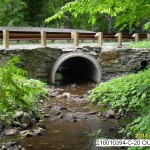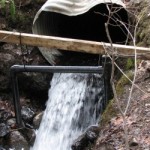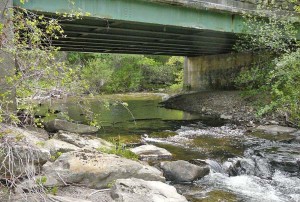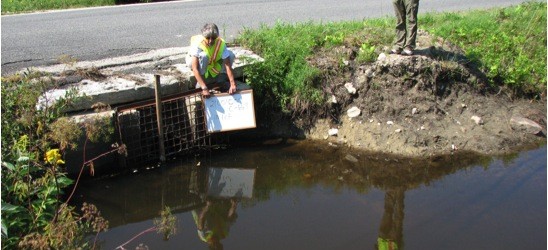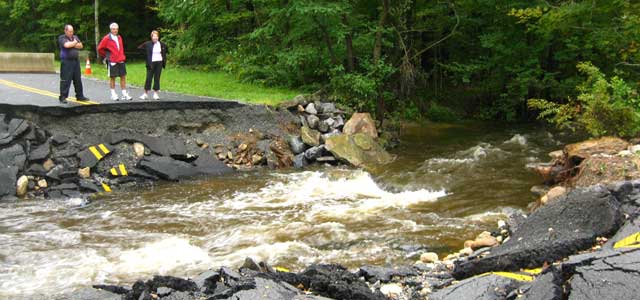
Improving Stream Crossings workshops well attended
BEAT was one of many partners who came together, lead by Julia Blatt of Massachusetts Rivers Alliance, to organize three Improving Stream Crossings workshops for western Massachusetts.
Statewide experts from all sectors covered the following topics:
- The Value of Road-Smart Stream Crossings
- Stream Crossings Standards and Permitting
- Engineering Standards and Guidance
- Case Studies
- Technical and Funding Resources
These workshops were very well attended by municipal highway, planning and DPW staff, municipal officials, conservation commissioners, engineering consultants, regional planning staff, state agency staff, environmental organization staff, volunteers, and anyone with an interest in improving stream crossings.
When stream crossings fail, the results can be catastrophic for those living and working nearby. Hurricane Irene and other recent severe storms wreaked havoc on western Massachusetts roads, costing millions in damage and disrupting life in affected communities for months.
Road closures from culvert failures result in limited emergency access, longer commute times, and lost business revenue. Many crossings fail, in some cases repeatedly, due to their inability to pass high flows and the materials stirred up by the river at flood stage. These crossings require ongoing maintenance and repairs when they become plugged with debris.
In addition, undersized, shallow, or perched road stream crossings obstruct the passage of wildlife by interrupting the flow of the stream and forcing other wildlife out of the stream and onto the road where they are vulnerable to road traffic.
The good news is that stream crossings can be improved to increase both public safety and fish/wildlife passage. Three day-long workshops will give participants tools to improve road stream crossings. Each workshop will provide best practices and case studies on replacing road-stream crossings – topics include site assessment, engineering standards, permitting standards, funding and installation.
Crossings designed with rivers in mind – and meeting the Massachusetts Stream Crossing Standards – can safely pass huge volumes of water, sediment, and debris stirred up by high flows, and maintain safe passage for emergency personnel and residents. While initial installation costs for an open arch or bridge span may exceed traditional culvert approaches, the long-term costs are significantly reduced.
This is a culvert.
It provides a passageway under the road. That’s what culverts do. They allow water to pass under roadways, footpaths, train tracks, etc. But improperly designed culverts pose a problem to the movement of fish and other wildlife.
Take a look at this improperly installed culvert. This is called a perched culvert. It creates a small waterfall that some fish can’t climb or jump.
Culverts can also be perched on the upstream end. This means that in times of low water the stream actually stops flowing. It won’t flow again until the water level gets high enough to enter the culvert.
Here’s a funny little video that illustrates the problem from the perspective of a fish.
Here is a properly designed stream crossing. Spans such as this are a vast improvement over culverts. They can be constructed on a much smaller scale to replace culverts such as those in the photos above.
Some points to note are that the span is wider than the streambed, except in times of high water. Also note that the stream maintains a natural substrate and a uniform gradient as it passes under the roadway. From the perspective of a fish or other animal, the only indication that it is passing under a roadway will be a brief shadow.
Improperly installed or designed culverts, especially undersized culverts, can also lead to the flooding of roadways. (Recently we reported on our victory in getting the state of Massachusetts to update its its stormflow calculations.)
This project has been funded by the Massachusetts Environmental Trust, the Natural Resources Damages Trustees, the TransWild Alliance, and the Berkshire Environmental Endowment Fund.

